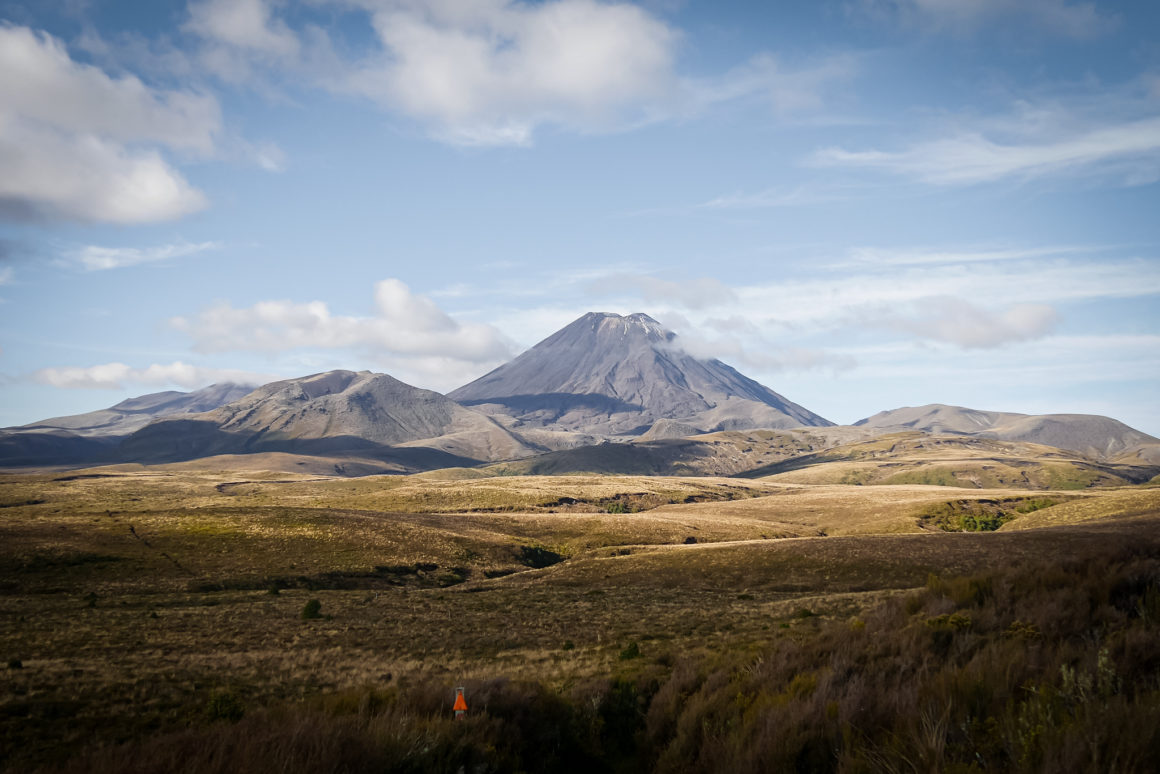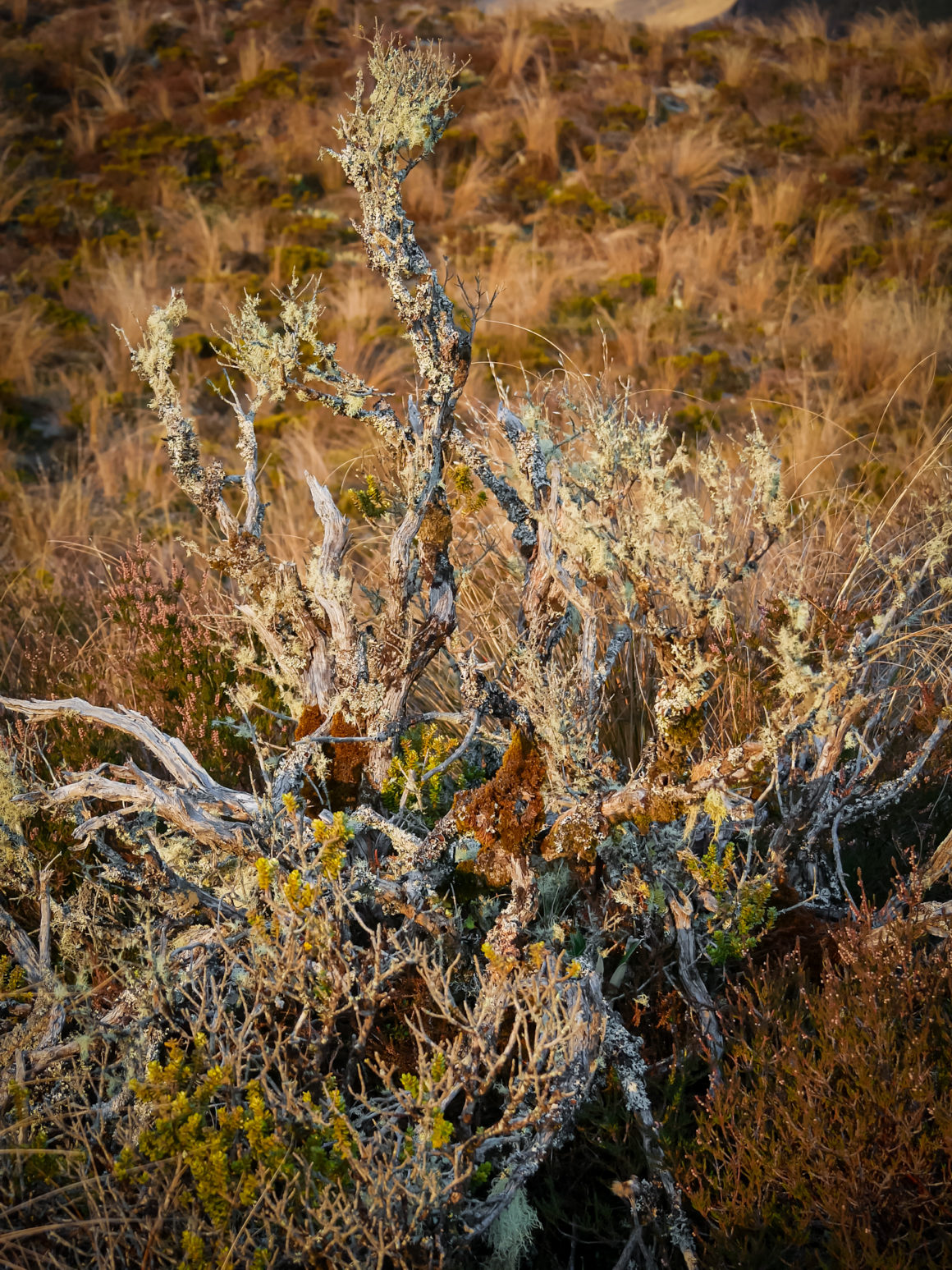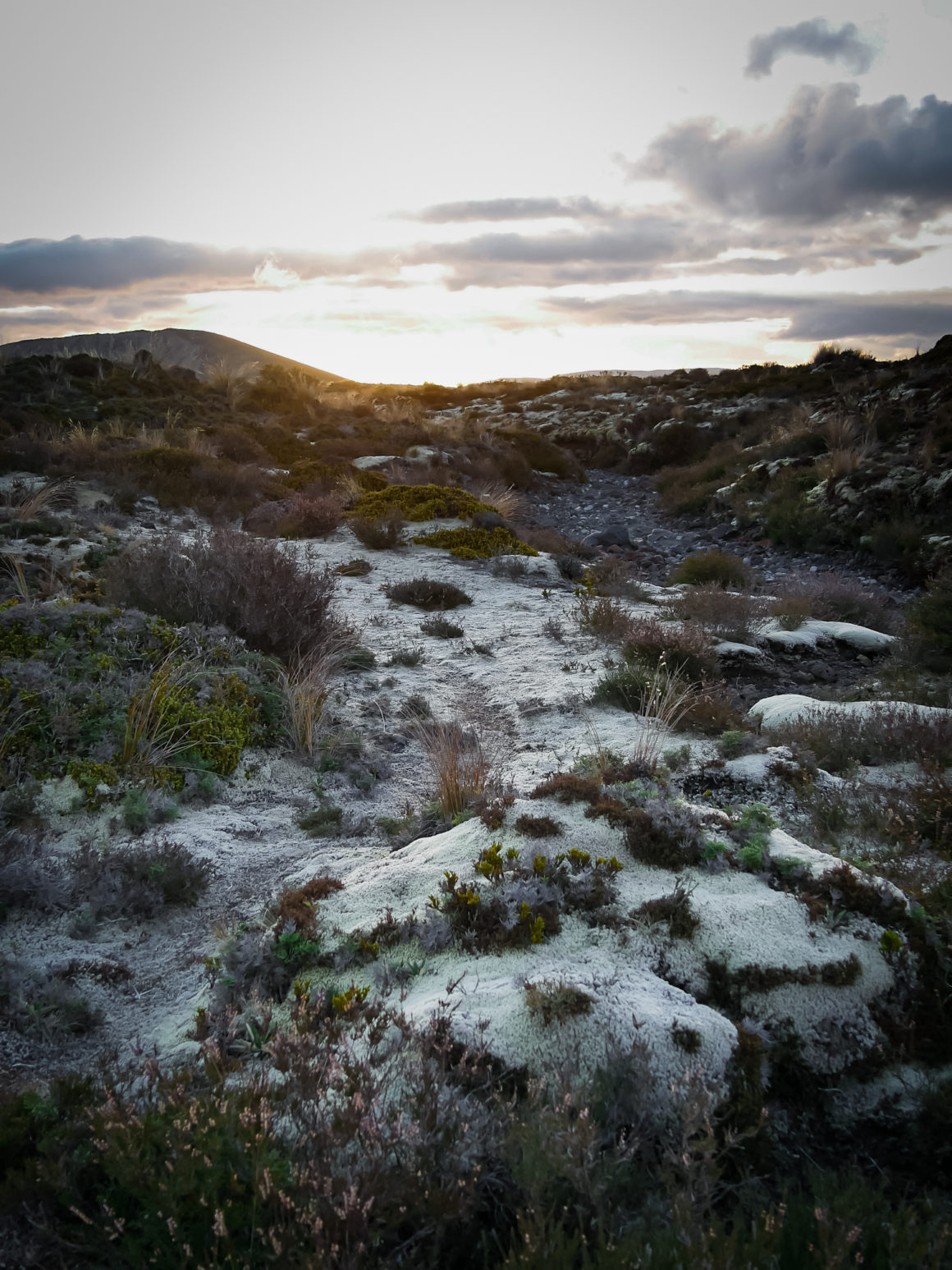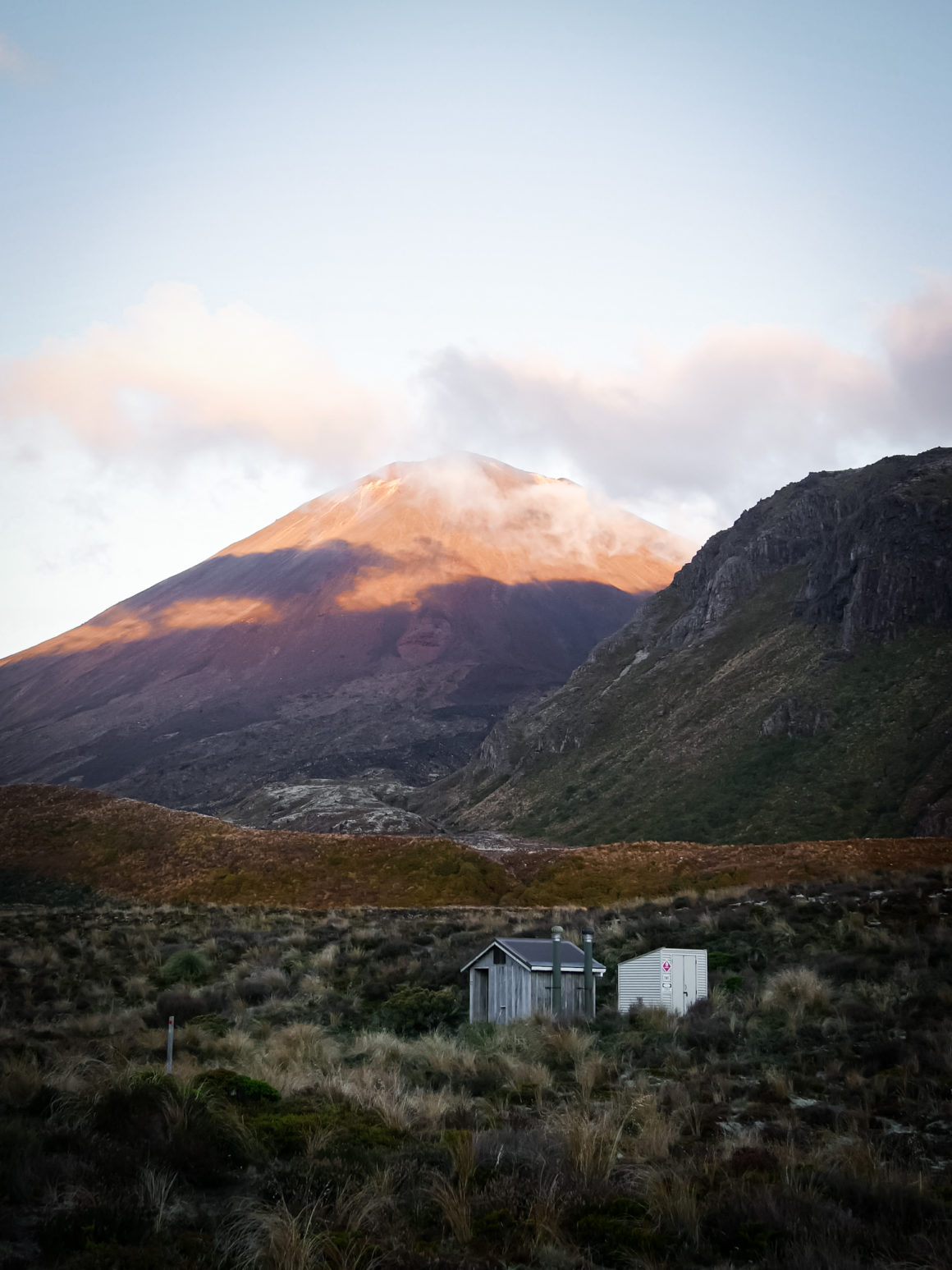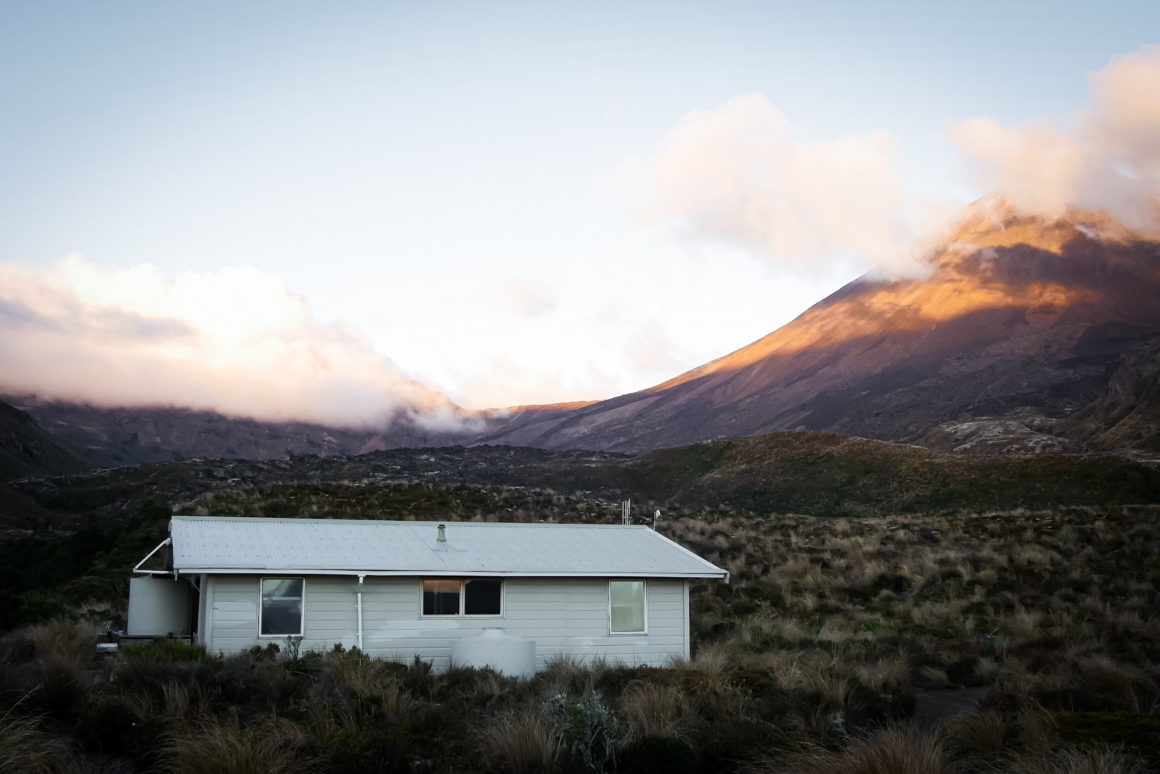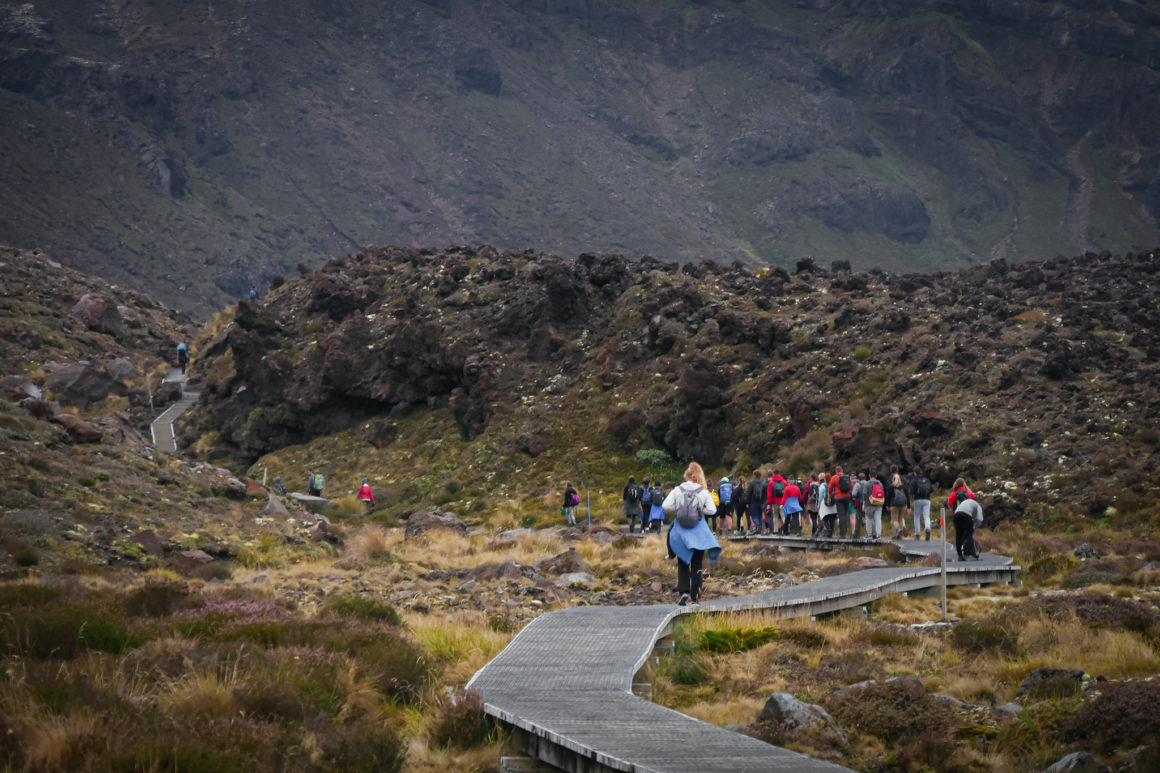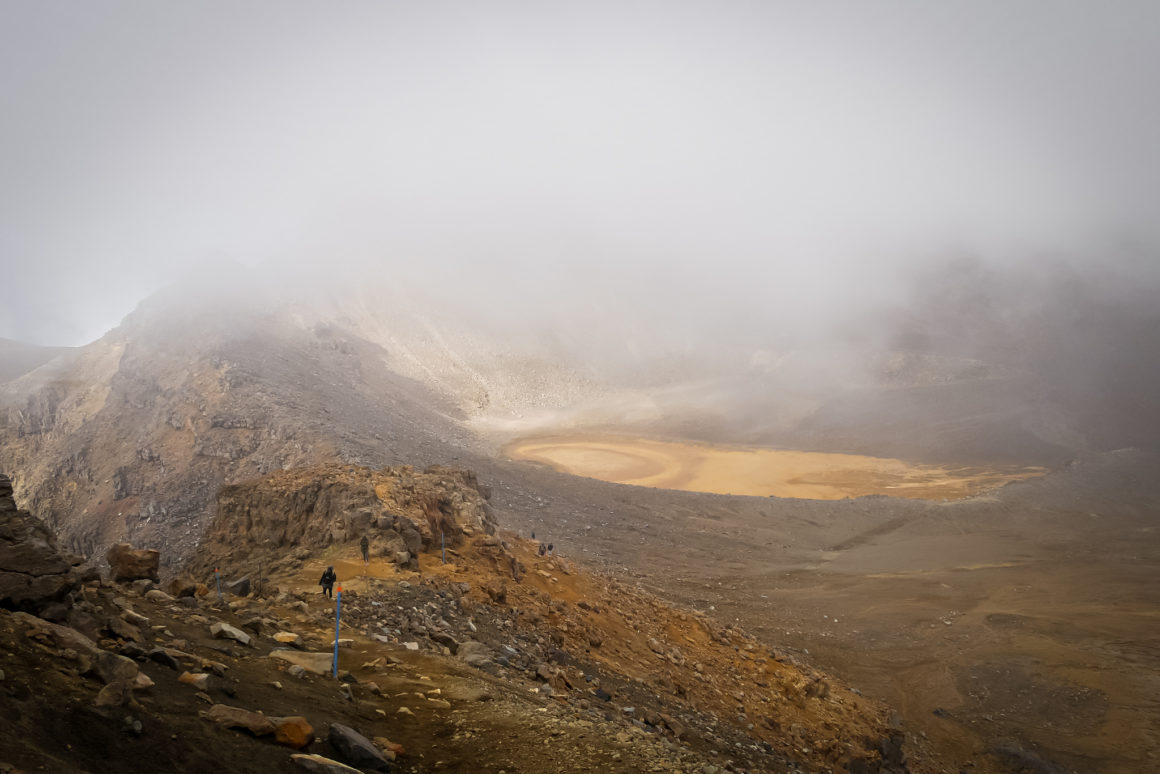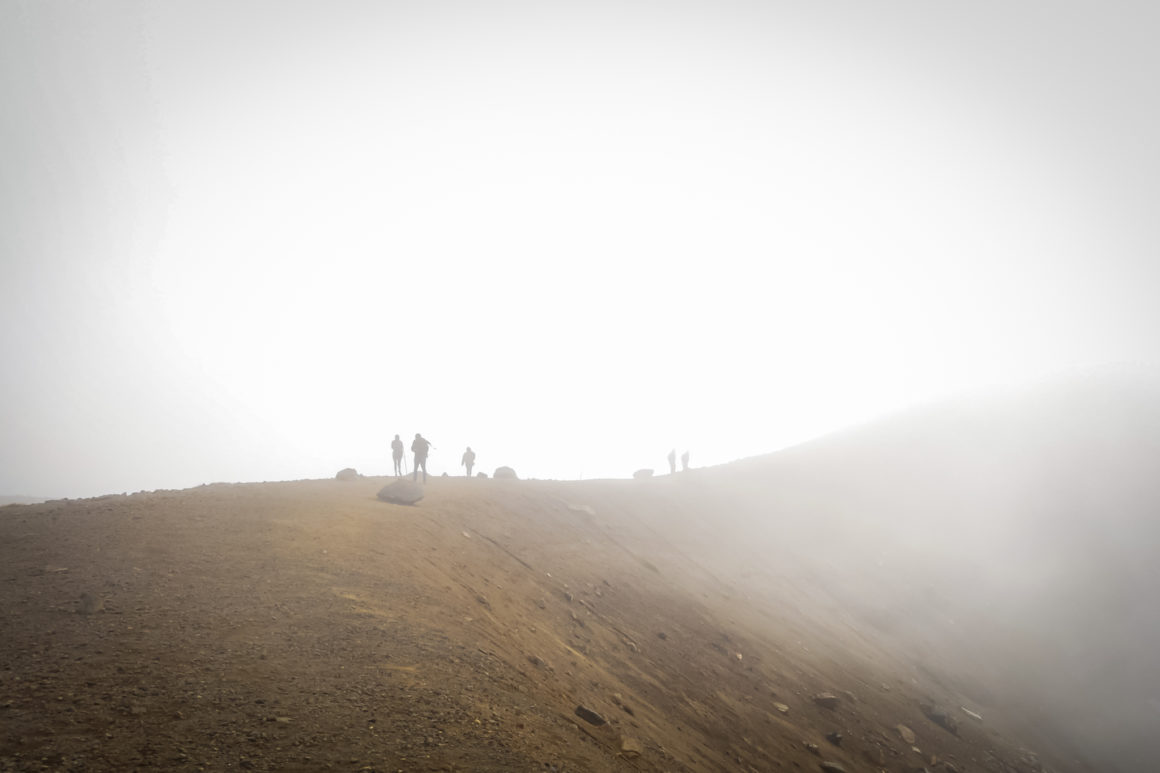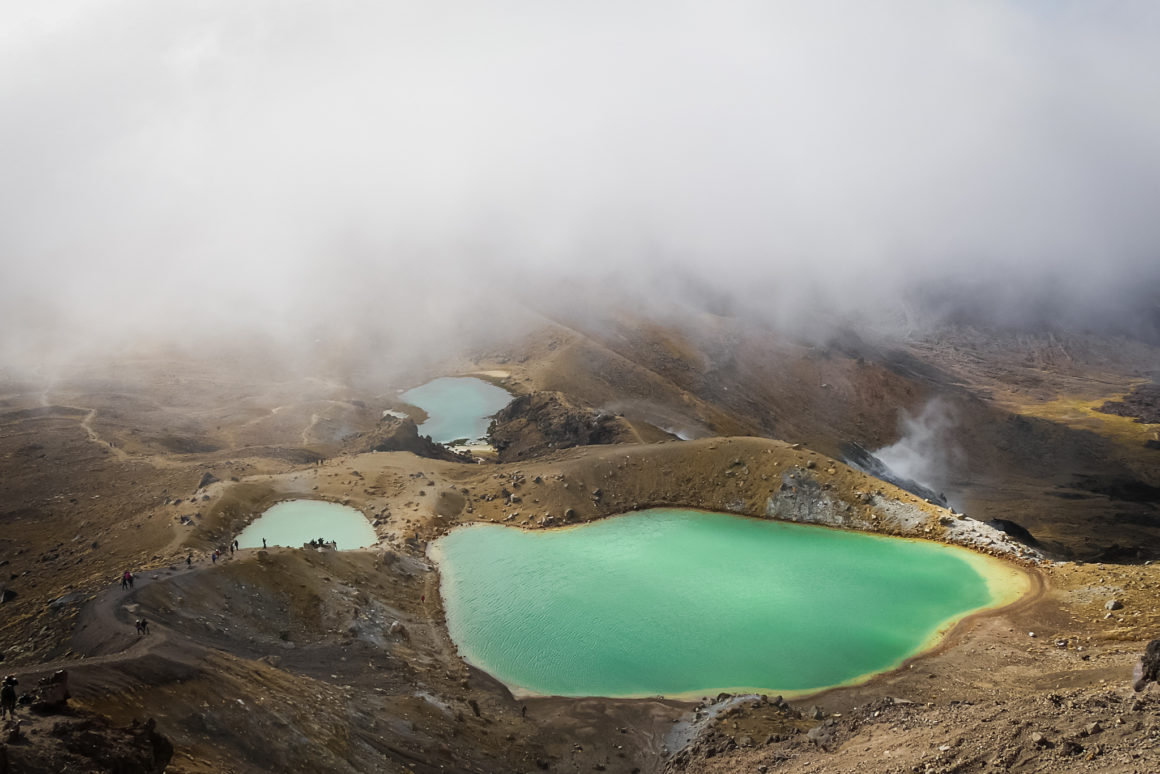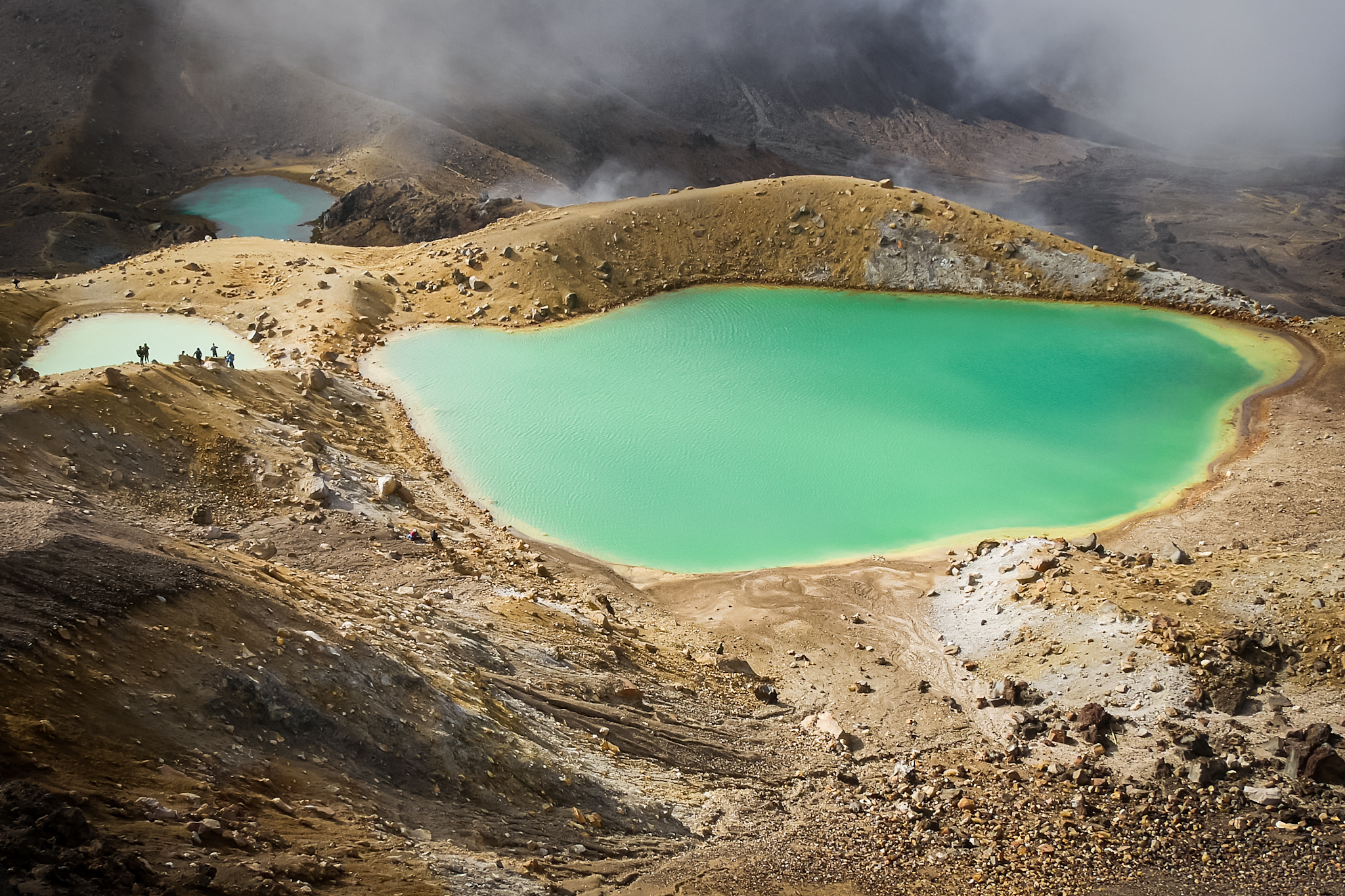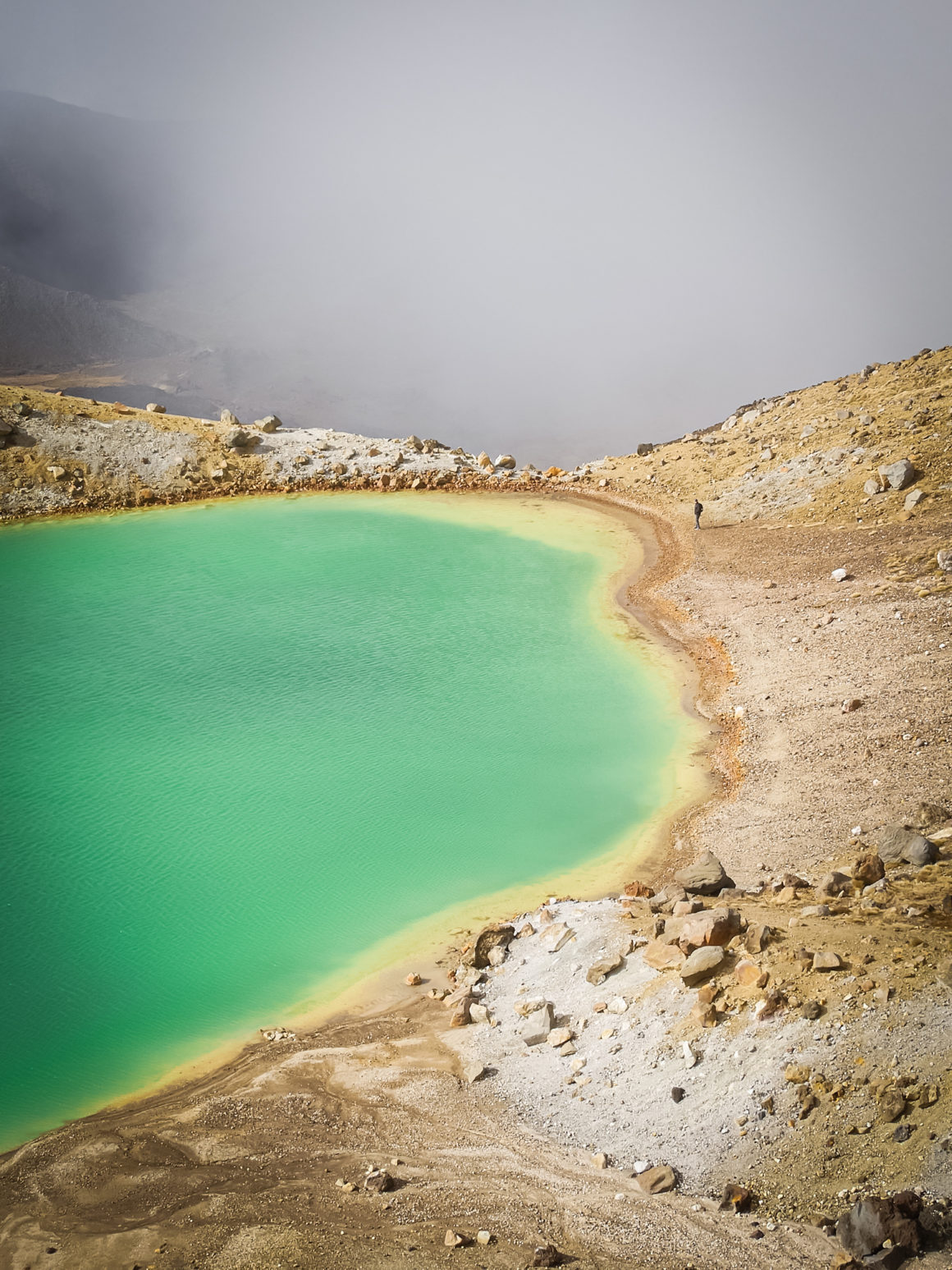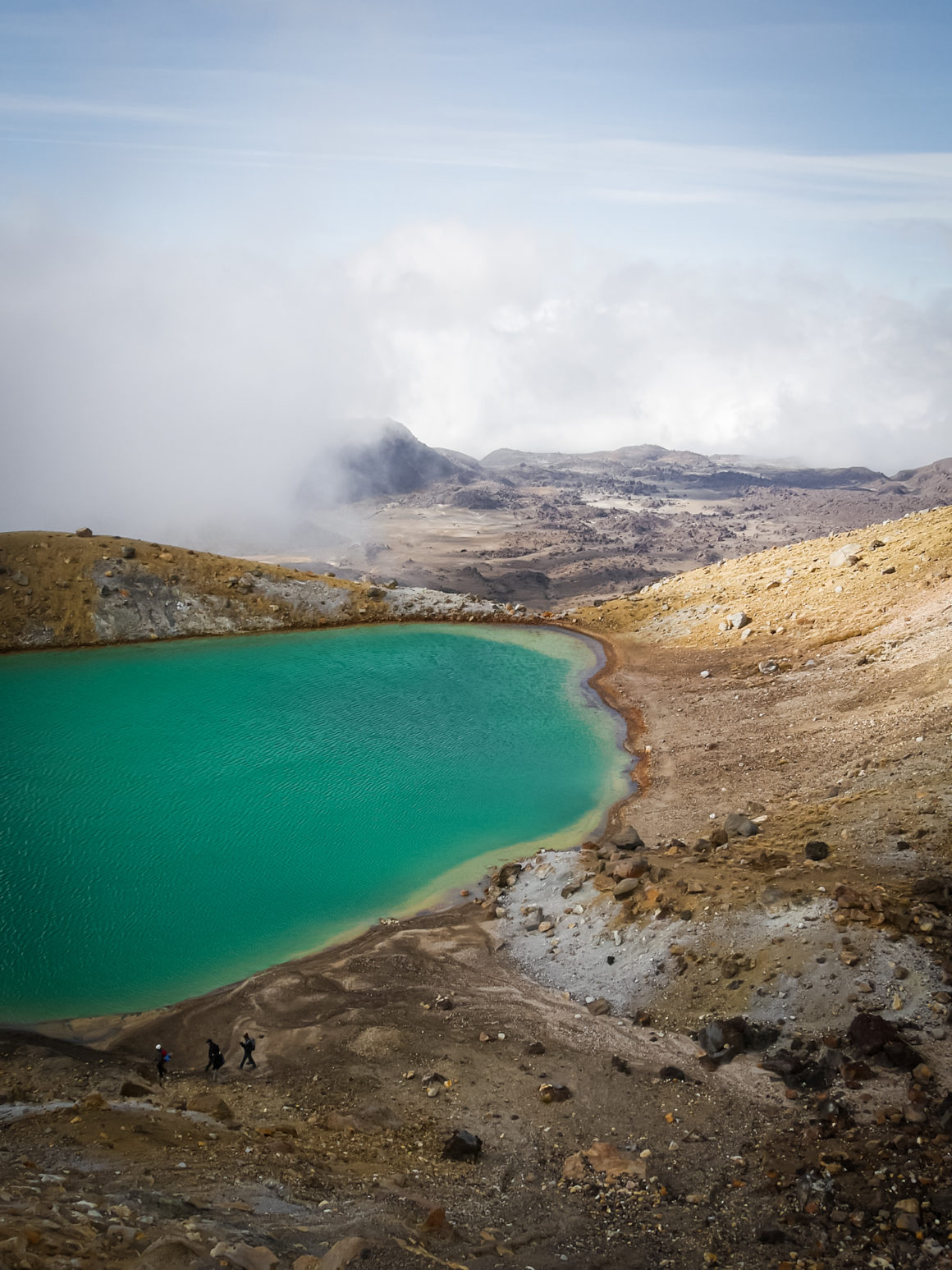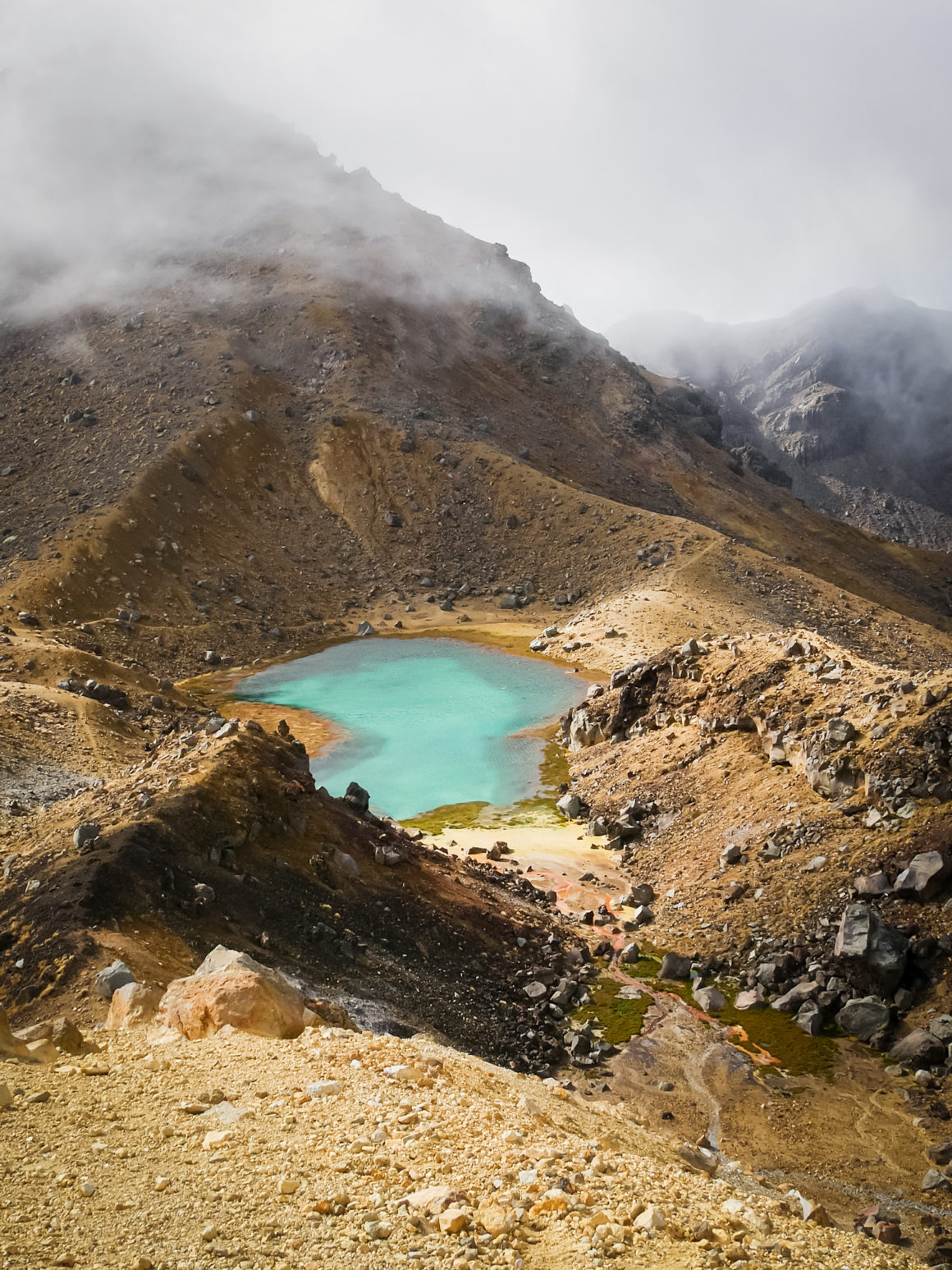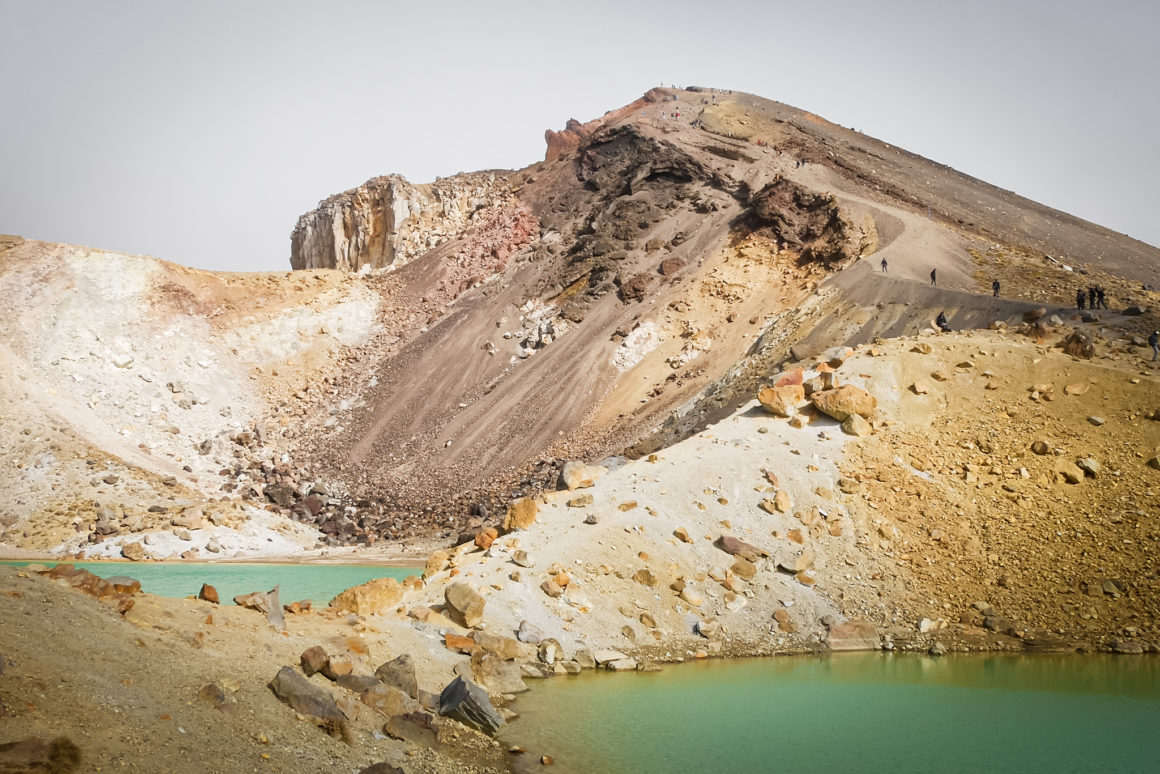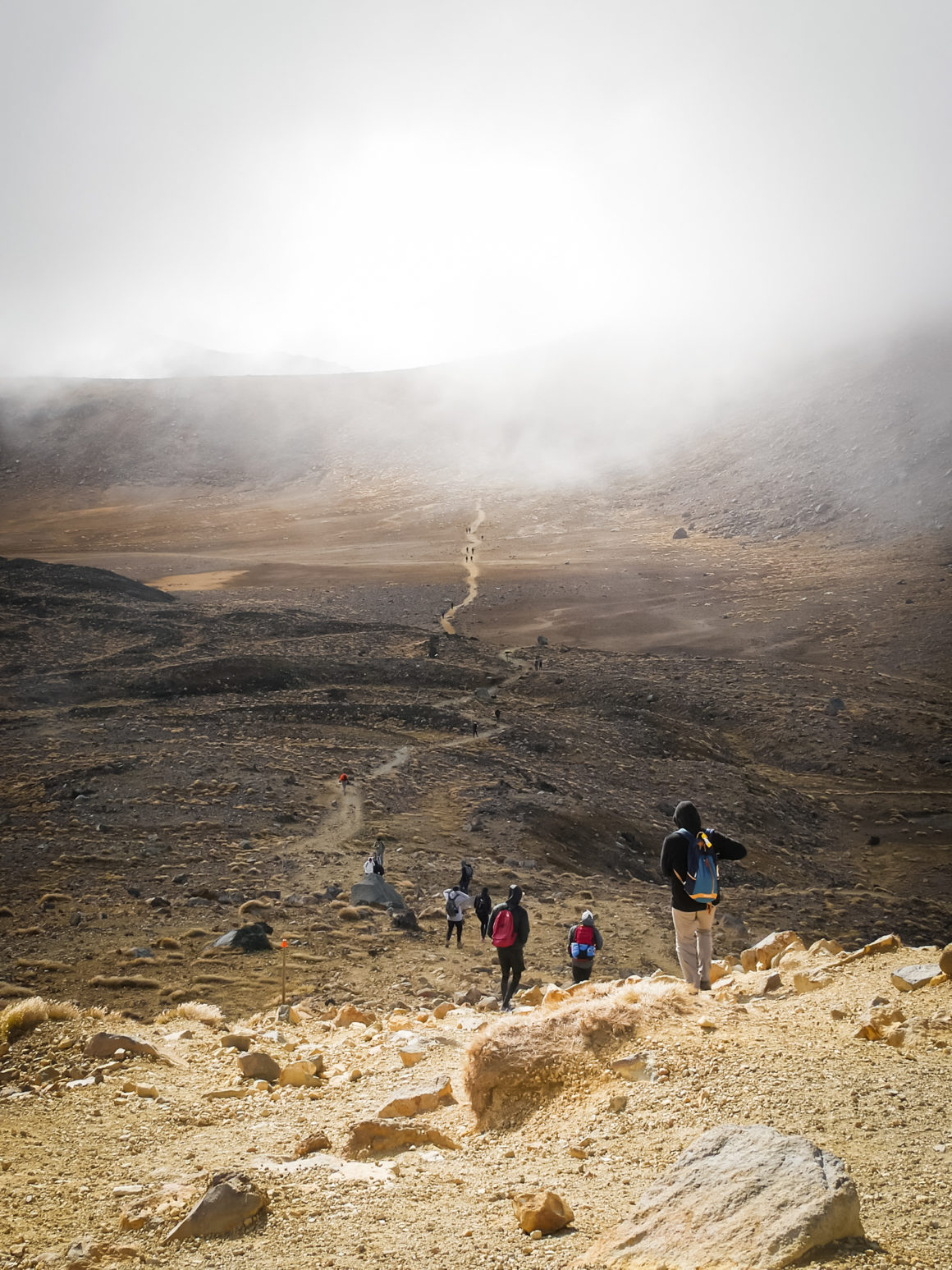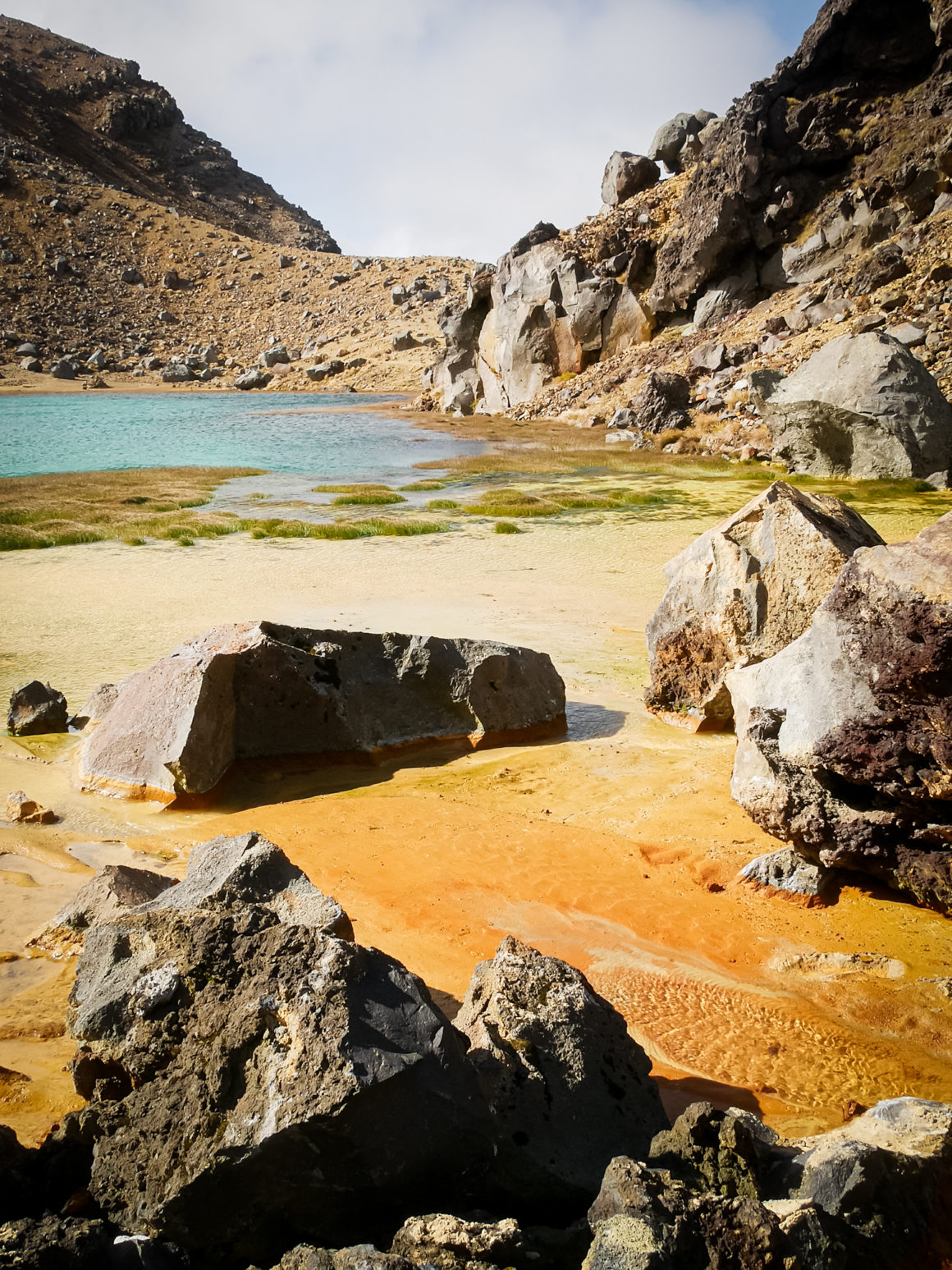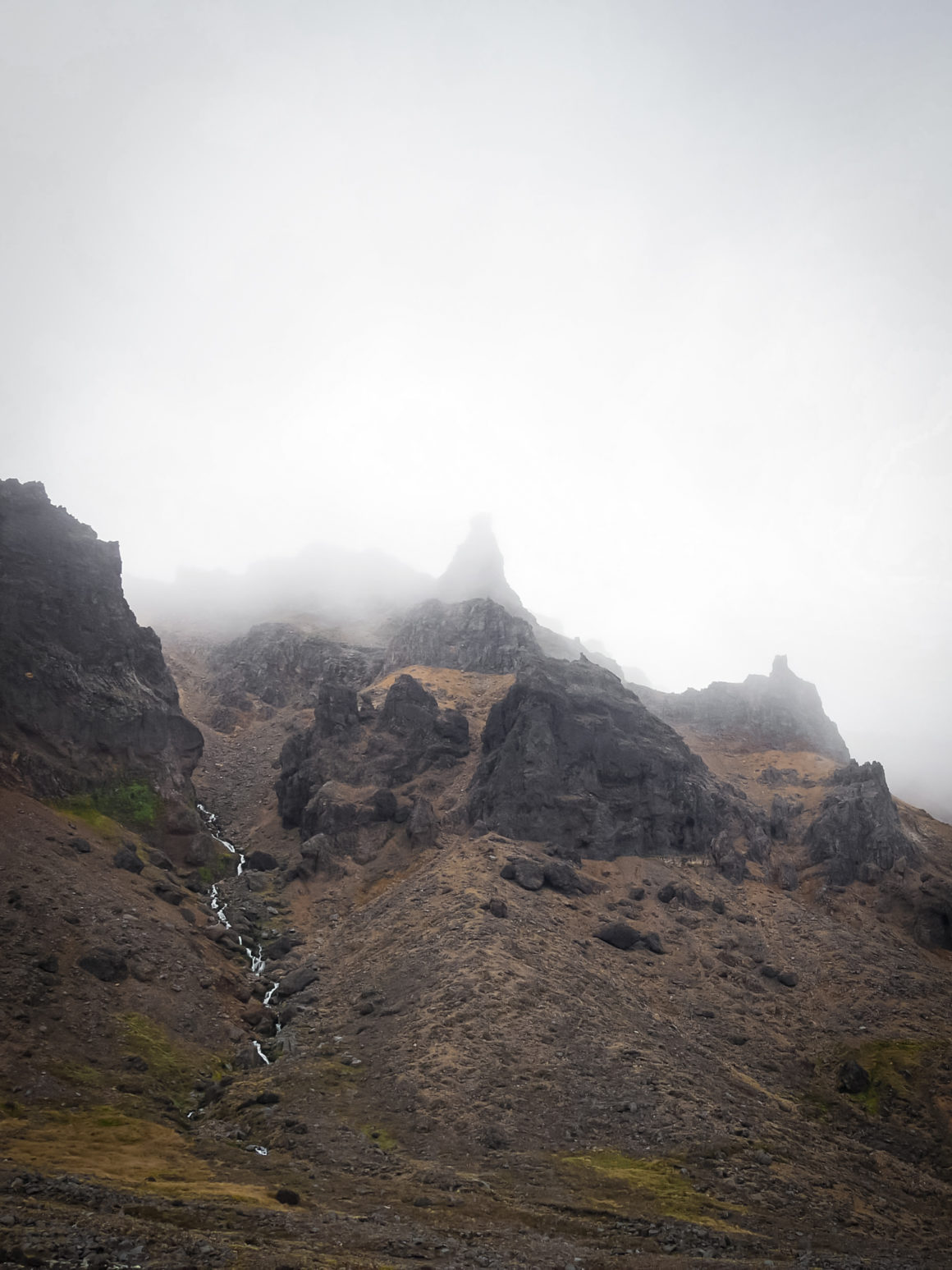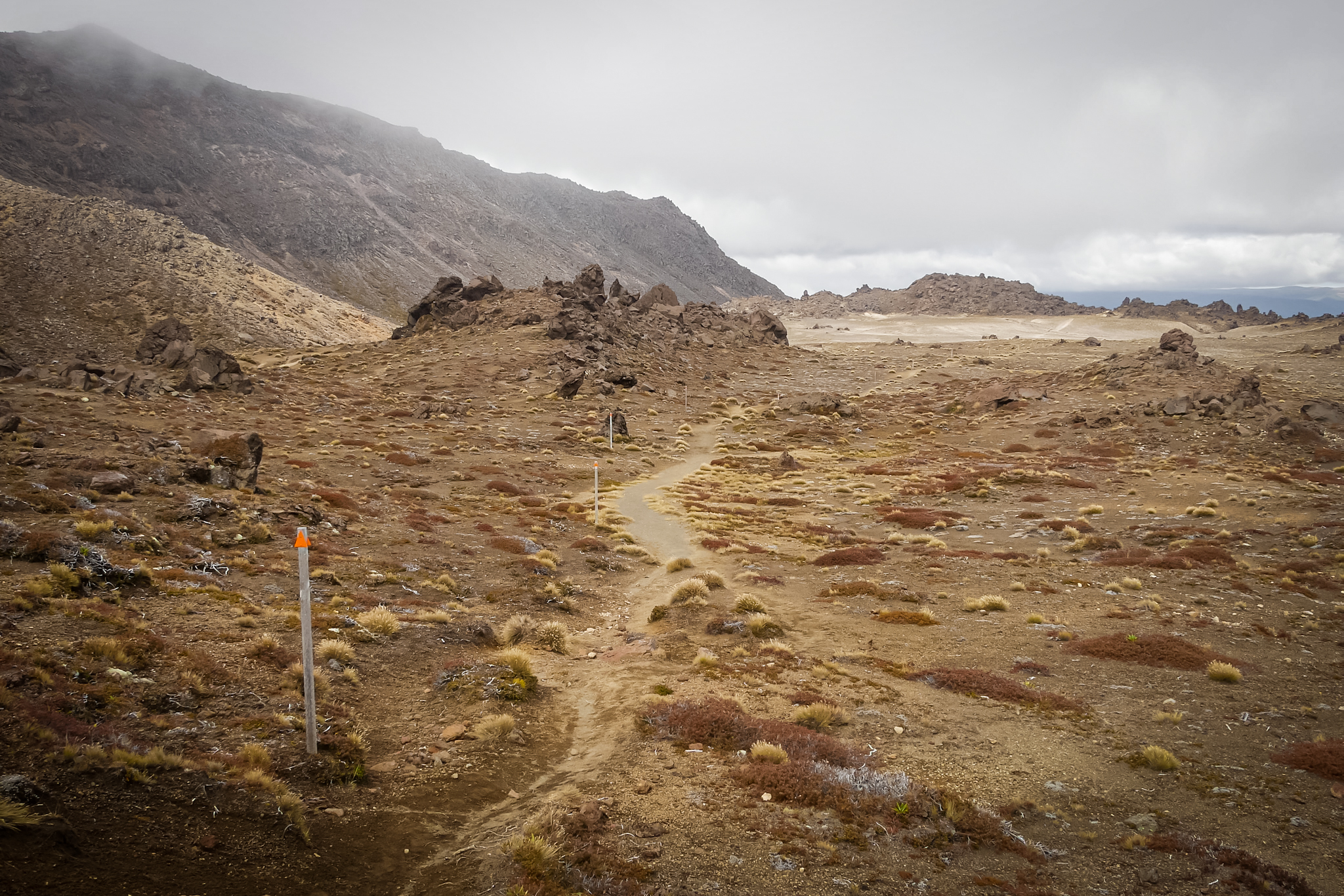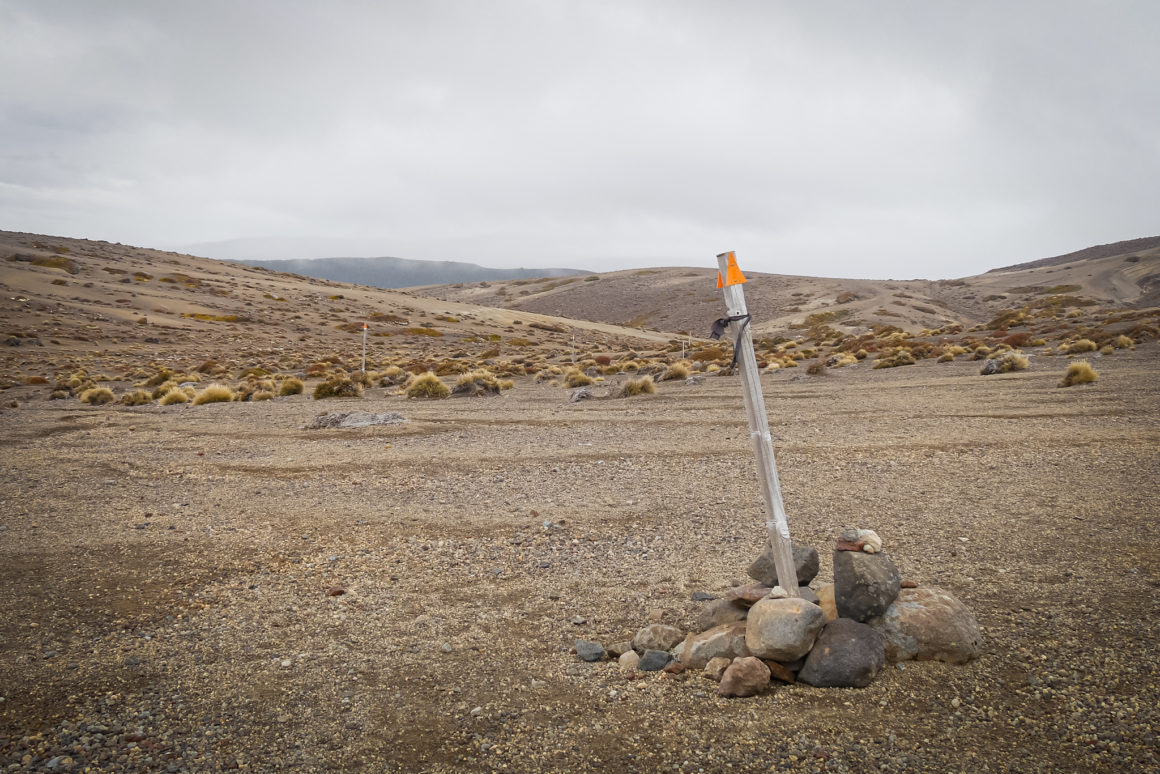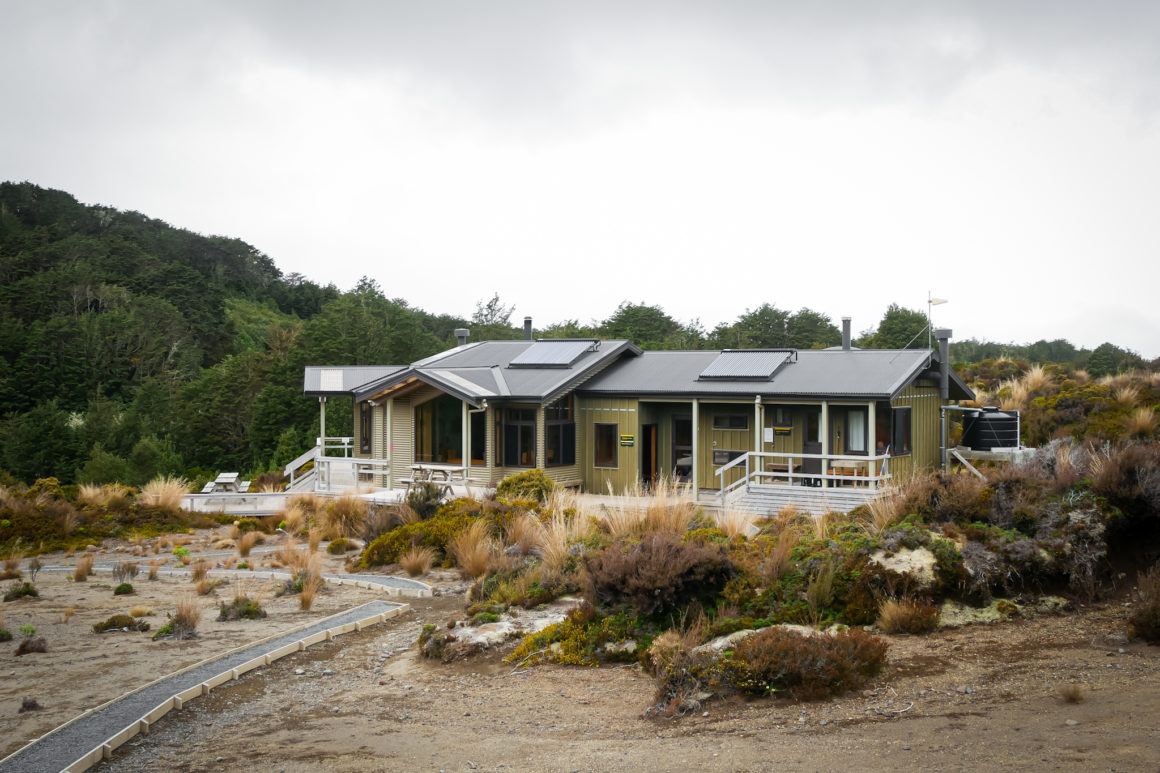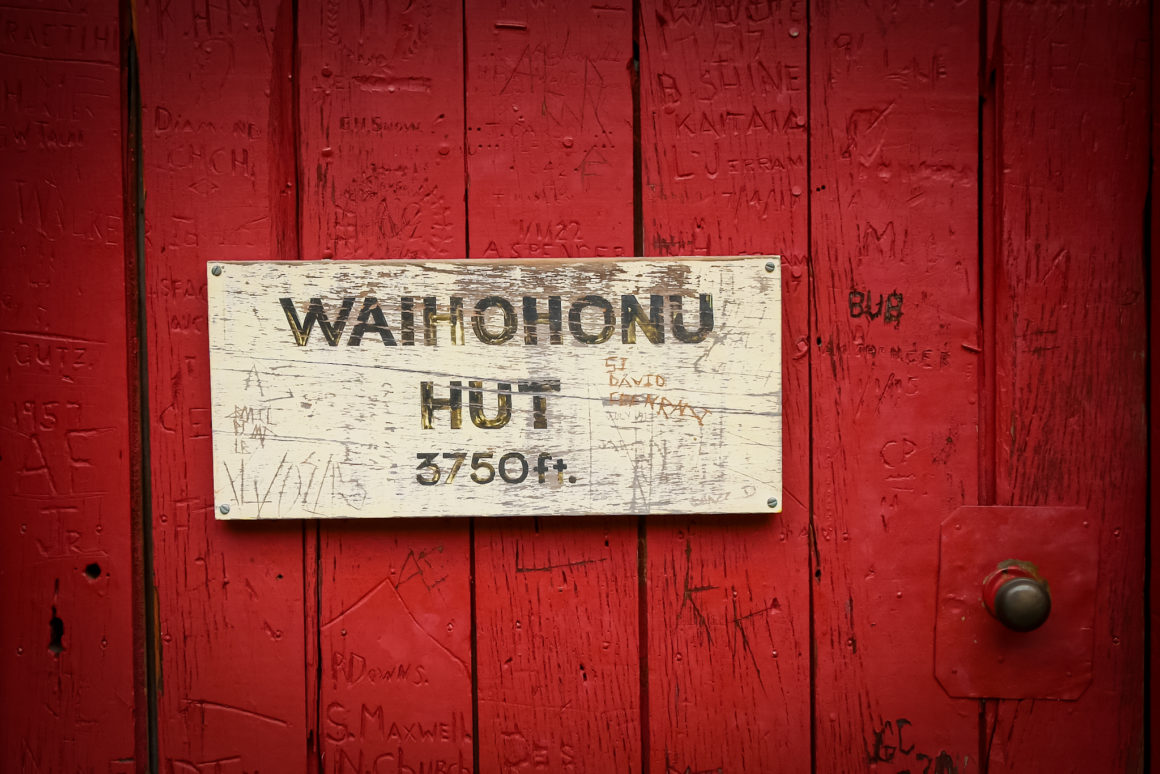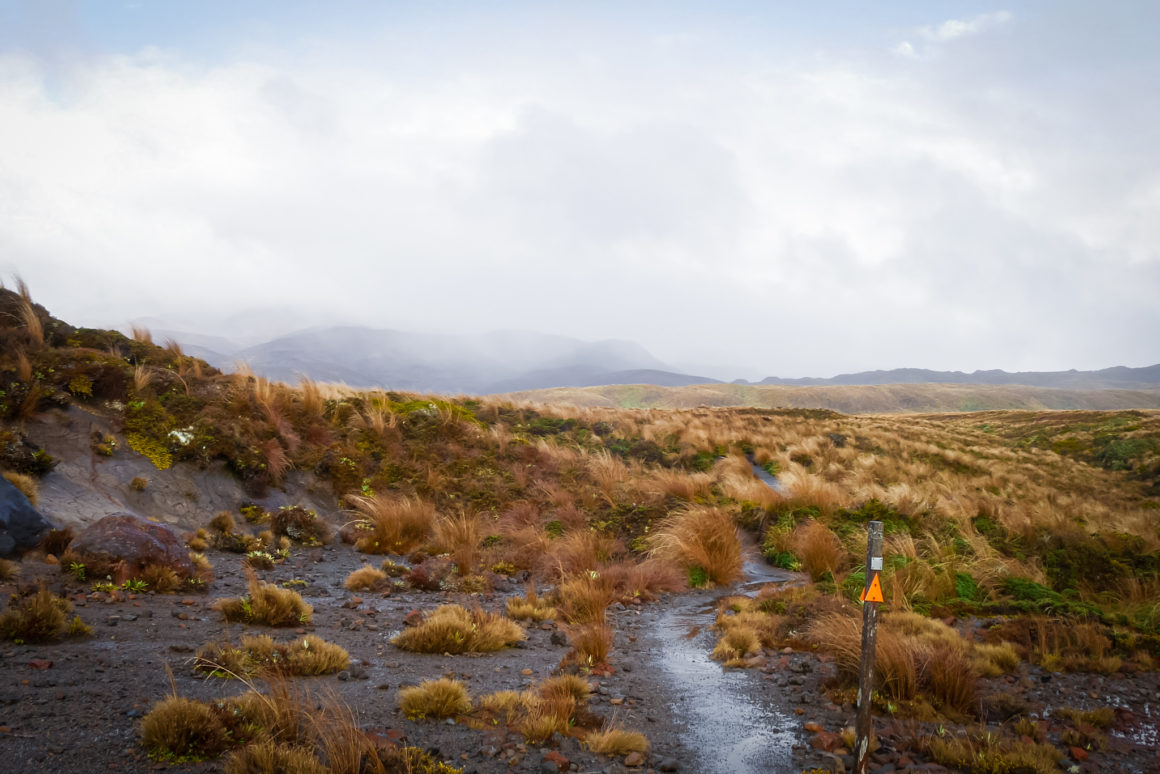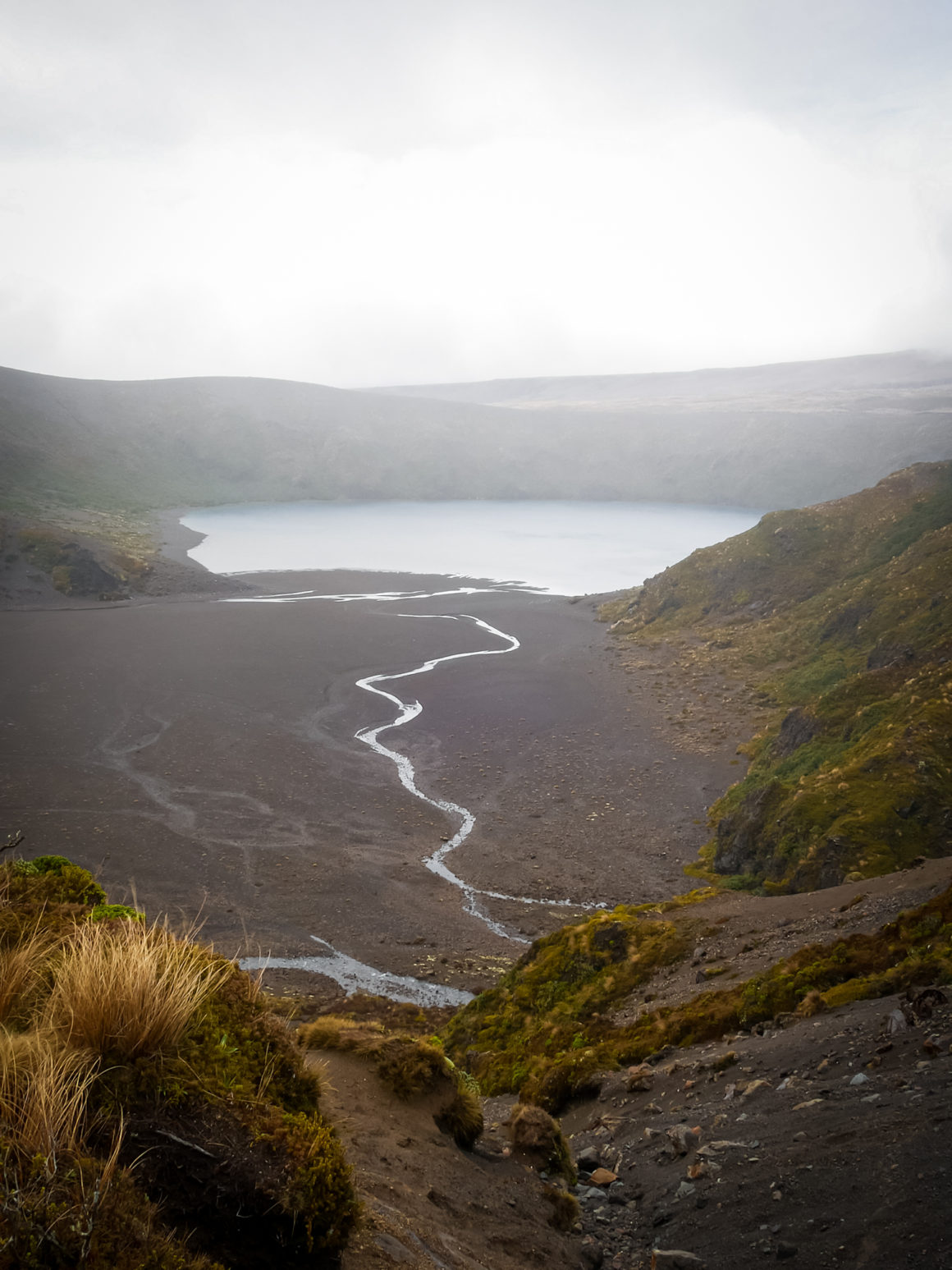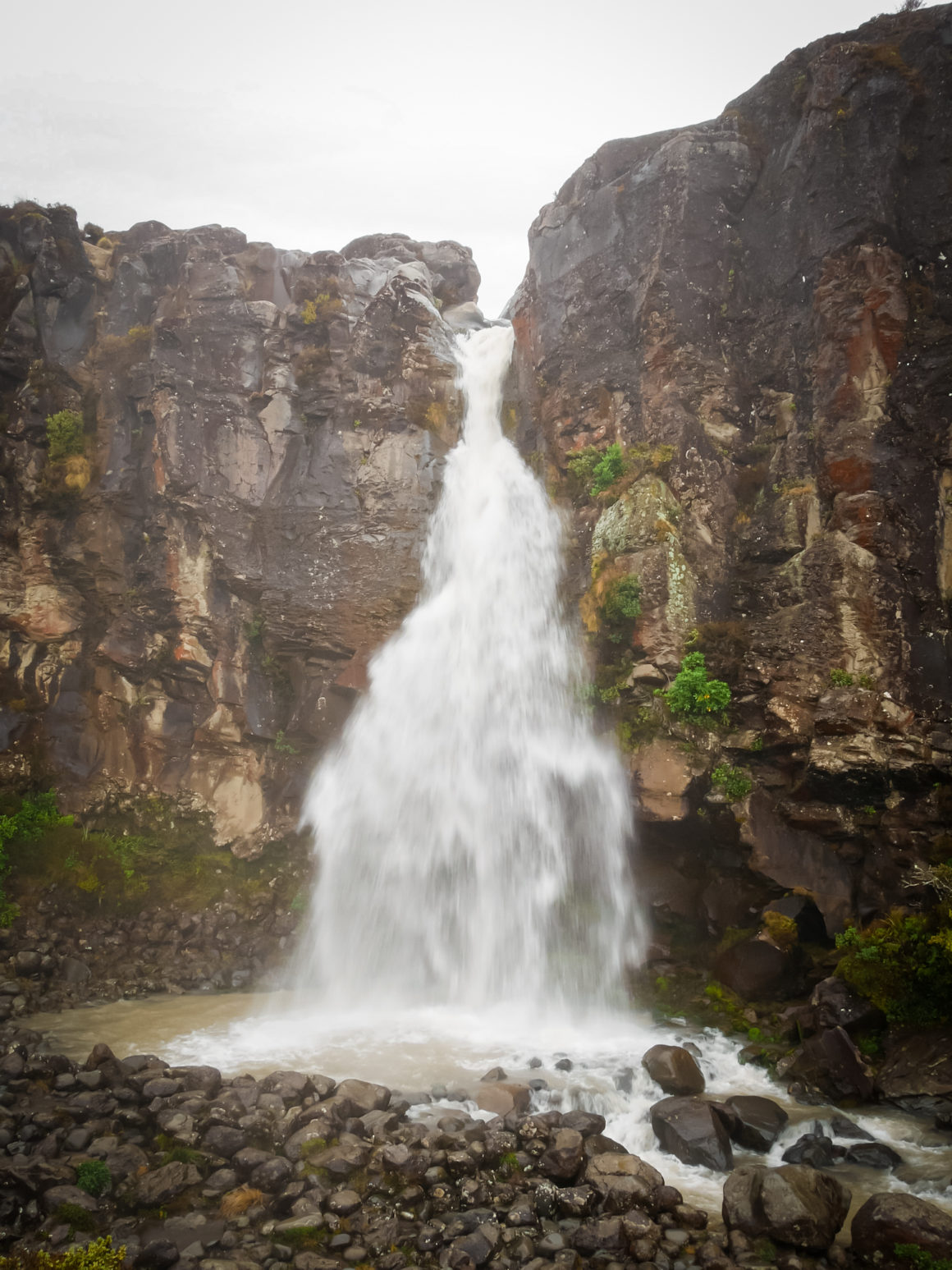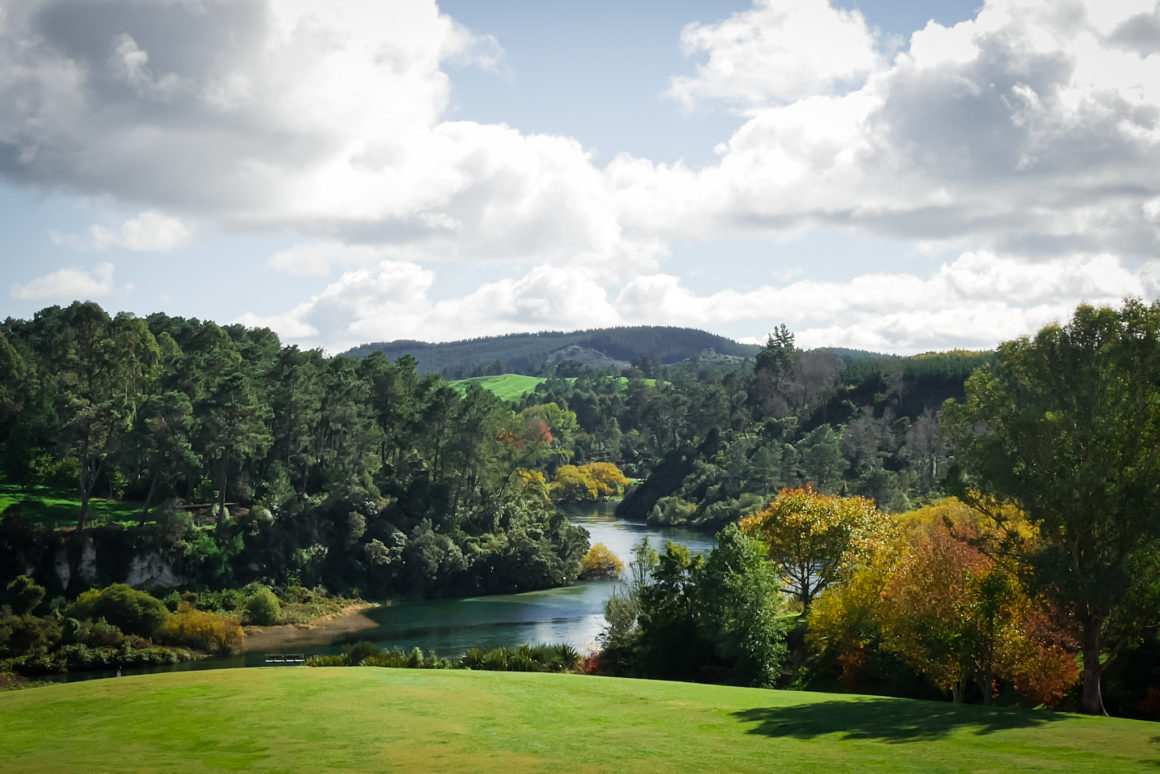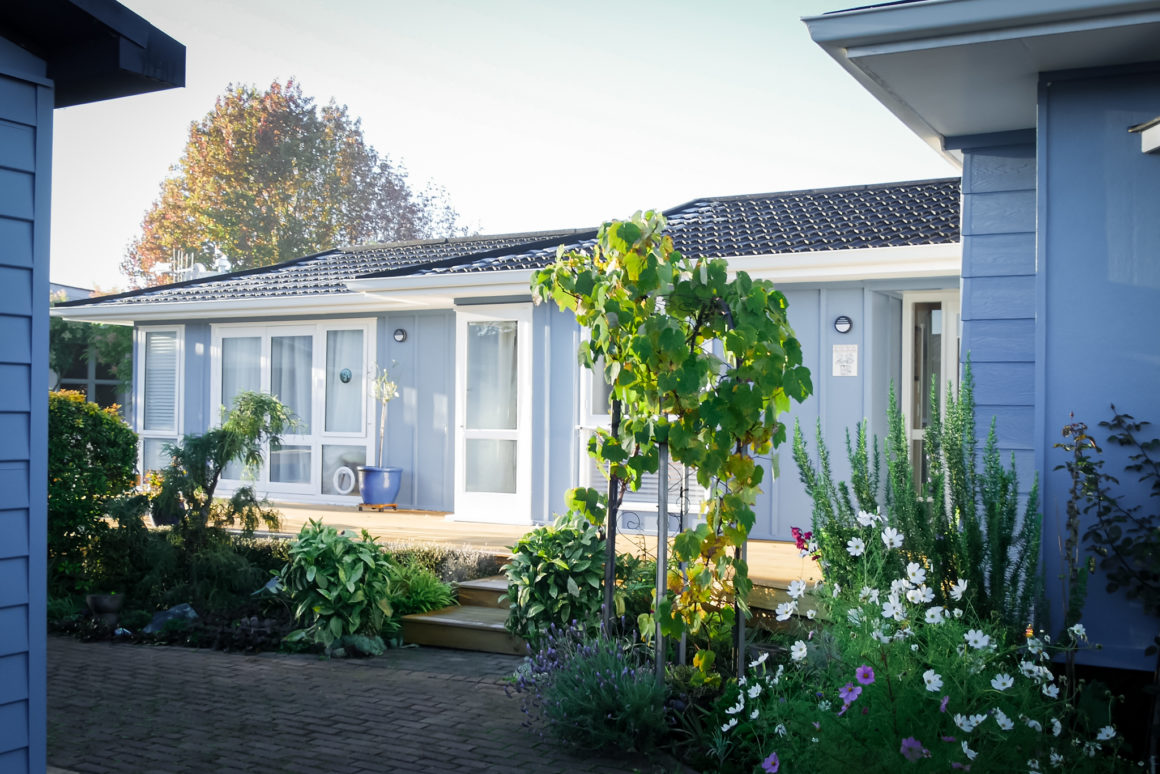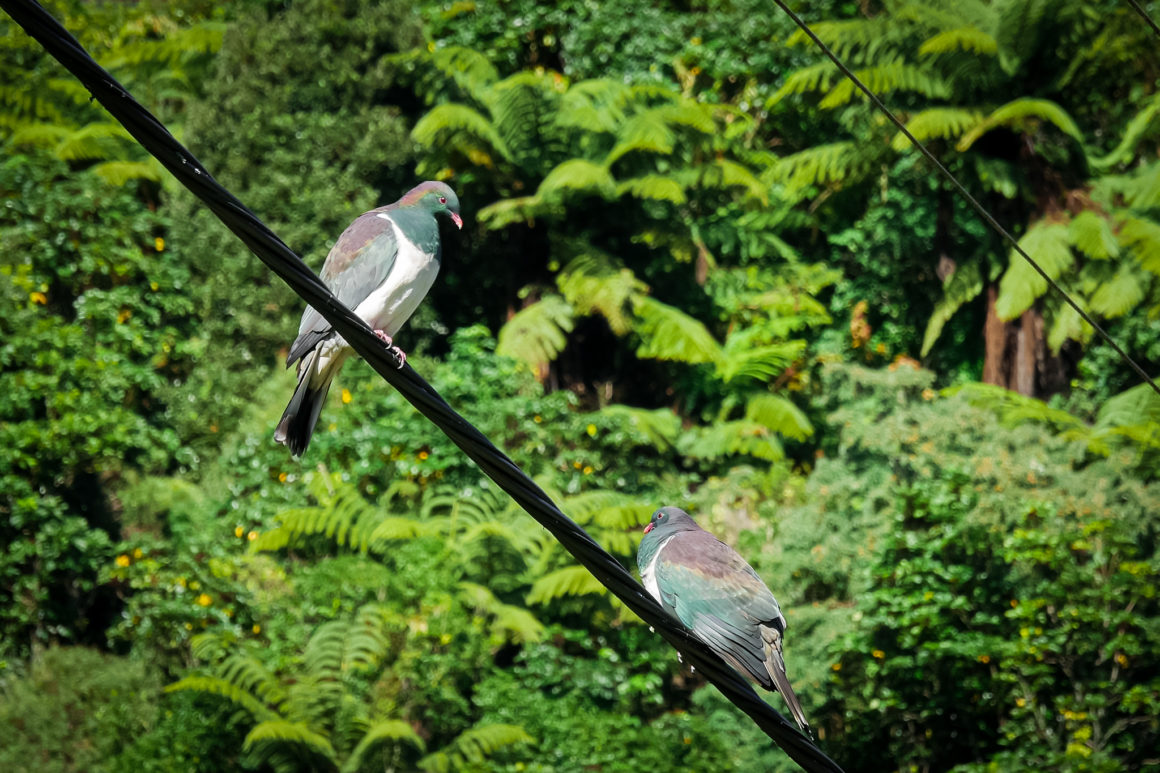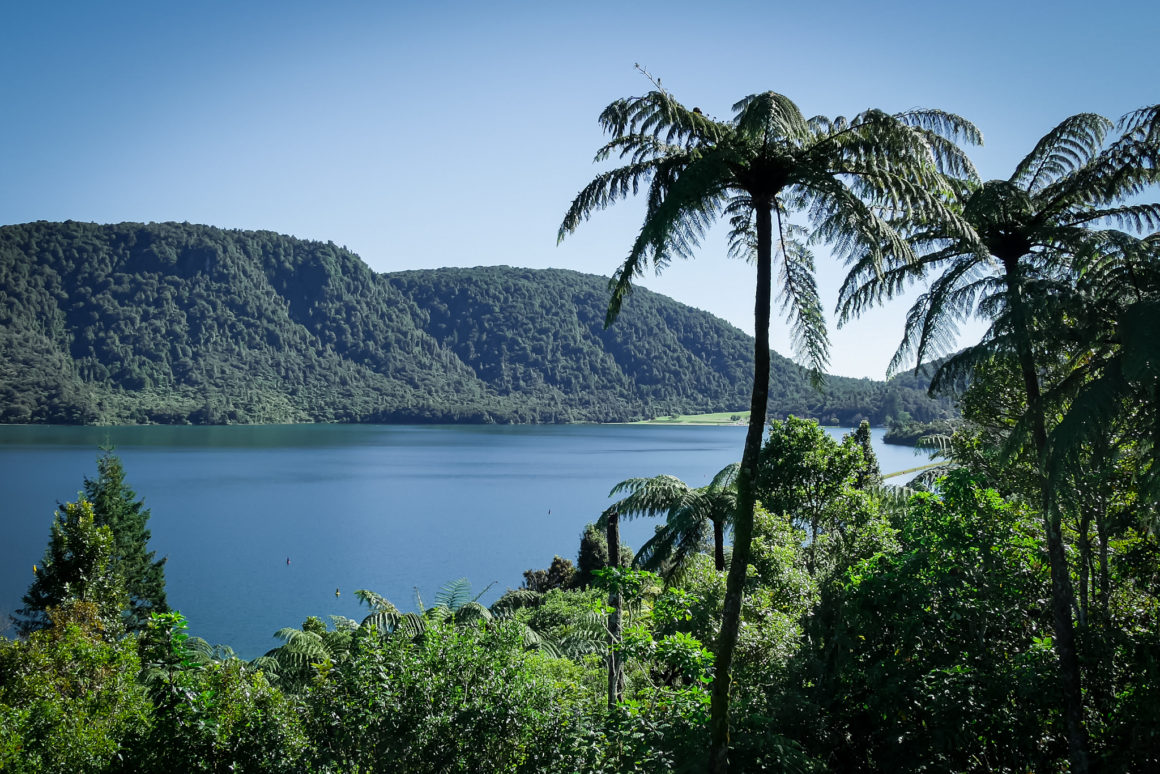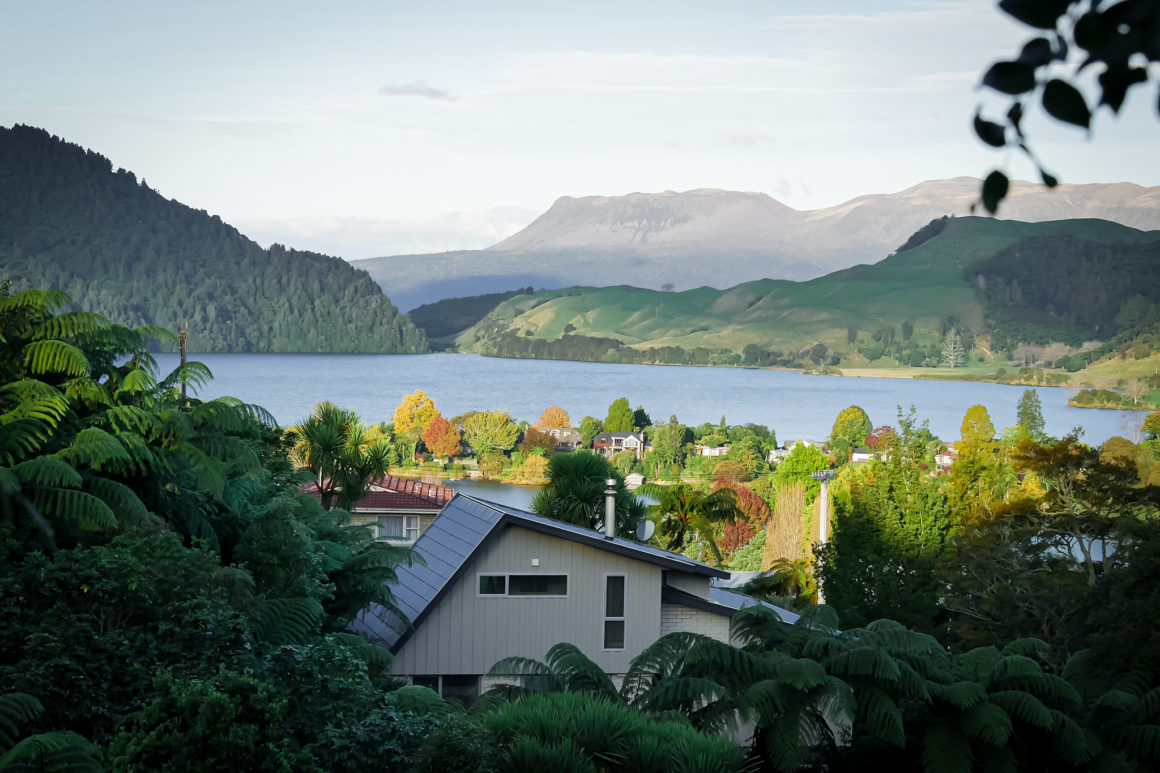DISPATCH
Taupo, a pretty town on the banks of the gigantic lake of the same name, welcomes me after a long bus ride. It is the center of the North Island and a volcanic region. The lake is in fact a gigantic caldera filled with water. The Tongariro National Park where I plan to go hiking the next few days is located a few kilometers from the city. Marie and Niel, the New Zealand cyclists I met three weeks earlier, welcome me with joy. They have a pretty house painted blue in the outlying districts of the city. They kindly agreed to keep my things and my bike during my hike.
I join the park hitchhiking. Which is not an easy task. Winter is close and the vast majority of tourists have left. Not many people on the small roads that bypass the volcanic massif. A couple of French backpackers, a kiwi and Chinese folks finally take me to the information center where the hike begins. The park is home to a chain of more or less active volcanoes, several hikes and a ski resort. I embark on the Northern Circuit, a four-day hike around the Tongariro and Ruapehu volcanoes. This is one of the country’s Great Walks. The most beautiful long hikes in New Zealand. The first part crosses the long desert plain extending around the mountains. Lava flows have long been recolonized by vegetation. There is nobody here and I appreciate the soft rays of heat of the sun on my skin. Mangatepopo Hut appears with the sunset and I set up my tent not far from the refuge marvelling at the change of colors on the volcanoes in the background.
The next day I attack very early to try to avoid the flow of tourists doing the Tongariro Crossing. The crossing is a day hike crossing the most beautiful parts of the massif. It is also the most visited part. The Northern Circuit follows the same route on the second day. Even early, it is the line on the trail. The weather is a little overcast and the wind has forced bringing with it layers of fog. I attack the rise of several craters fighting against the gusts. On the other side, the superb Emerald Lakes light up the landscape. The emerald and turquoise waters attract all eyes. A red crater also fascinates me. A strange hole seems to have pierced the volcano. It is an old magma feeding pipe. Harder than the ashes and the slag which surrounds it, the erosion left it exposed on the side of the crater.
I spend a long time observing the evolution of colors according to the passing clouds. Smoke rises at the end of the white veil from several places in the ground. A slight smell of sulfur floats in the air. The trail finally leaves the Tongariro Crossing and I leave the tourists to sink into the Oturere valley. Basalt columns rise from the ground. Beyond the massif spreads the deserted Rangipo. It is the great desert plain which surrounds the massif and which I crossed by bus. The soil is too poor there and the winds too strong for the vegetation to grow. The fog returns and I walk a little blindly along a lunar plateau. Only a few tussock shoots grow there. Oturere Hut appears and I spend a cold night agitated by gusts of wind.
The third day crosses alternating desert valleys and small oases of beech forests. Basalt flows mixing with soil make the progression a bit long. It is all gray and I go through the day without realizing it. At the Waihohonu Hut refuge, a group of schoolchildren took over the space to bivouac. I go to Ohinepango Springs but the source is nothing exceptional. With the hubbub of children I find it hard to enjoy the evening. I leave early in the morning to take advantage of the calm. The last day is quiet between sun and rain. The peaks of volcanoes appear intermittently. I follow the long Waihohonu valley and go to see the old Waihohonu hut, a pretty shack dressed in red. Built in 1903, it is the oldest hut built in the park. At the top of the Tama pass, I have lunch in the wind and quickly go see Lake Tama and Taranaki waterfall. I descend into the valley on the other side and join Whakapapa village and the information center. Despite the somewhat average weather, my tour of Tongariro National Park was a great discovery. I leave satisfied of having tried the adventure.
Back in Taupo, I get my things back and Marie and Niel kindly offer to drive me to Rotorua! I spend a night in a DOC campsite on the edge of Lake Okareka, a small volcanic lake located in the hills just behind Rotorua. Then I join the home of Margaret and Neill, two other Kiwis I met on my bike ride along the west coast of the South Island several months ago. (Apparently all New Zealand males I meet have the same first name!). Neill shows me the area and Rotorua which I already know since I already visited the city during my first month of travel in New Zealand. But he seems to take so much pleasure in being my guide that I accompany him with joy.
Neill also offers to drive me to Bay of Plenty, sparing the trip by bike. I am planning to go ask the different packhouses in the area if they are still looking for seasonal staff. The kiwi packing season has started a good month ago and I have some concerns. We start by going to see Trevelyan’s, a packhouse that attracts me a lot since that is where Alejandro and Flor, the two Argentineans I met during my wwoofing in Dunedin, worked. Neill drops me off at the front desk and I go to the recruiting office. I fill out a sheet with my details and it’s all good! There are still places available, the season only really starting just now! I have to come back Monday morning and I will be assigned a job! I come out smiling to tell the good news to Neill. It is Friday, I have to find an accommodation. The packhouse has a campsite right next to the warehouses and there are still places available in a house shared by the employees. Neill drops me off with all my stuff and I settle in for my last few weeks in New Zealand.

